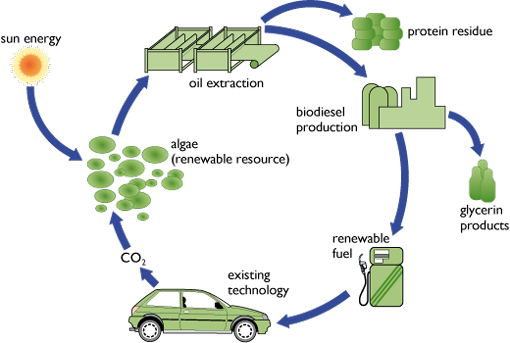Potential
Second-generation biofuels
As biofuels have developed, there has emerged the need to address wider strategic issues around their production. Currently we largely produce 'first-generation' biofuels, made from the fruit starch or grain of a plant. Producing such crops for biofuels results, to some degree or another, in the problems outlined on the previous page.
Such problems may be addressed by 'second-generation' biofuels that are only just emerging. These include products such as cellulosic ethanol, biohydrogen and wood diesel, which are produced from agricultural residue and waste materials. Crucially, they do not directly compete with food production, nor do they require the destruction of natural habitats to expand.
Using current technologies we do produce some biofuels from waste sources, such as processing used cooking oil and biogas, but this is only available in very small amounts. If agricultural waste and refuse were used to make biofuels, this could lead to large-scale production that might replace 20% of current transport fuels. By using waste, such fuels have the potential to reduce CO2 emissions by up to 90%.
However, at the moment the technology of producing second-generation biofuel from waste is not fully developed and the costs are high.
If you wish to explore this issue further, a useful online review of biofuel issues is provided on the explainthatstuff [Tip: hold Ctrl and click a link to open it in a new tab. (Hide tip)] website.
Third-generation biofuels
The long-term solution for biofuels could be production using microalgae (Dragone et al., 2010) – see also Figure 13 and Video 2 below. Algae can produce very large volumes of feedstock for biodiesel and bioethanol much more efficiently than production from plants. It can also use land not suitable for agriculture. The process could be undertaken sustainably and so cut CO2 emissions by 90% compared to current transport fuels.

If you are reading this course as an ebook, you can access this video here: Biofuel Production using Microalgae
However, several important cost, scientific and technical barriers remain to be overcome before the large-scale production of microalgae-derived biofuels can become a commercial reality.
Activity 8 (self-assessment)
Briefly summarize the prospect for biofuels.
Answer
Overall, biofuels as currently produced (with certain exceptions) make a limited contribution to cutting transport's CO2 emissions. However, in the long term – despite limitations and serious issues around current biofuel production – advanced, third-generation biofuels could represent a permanent sustainable fuel solution.
